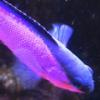Contributor of Pic to identify various diseases
-
Topics
-
Latest Update
-
3
-
3
-
3
Reliable and ultra quiet pumps for sales 1000L and 1350L eheim and sicce
1350L Sicce pump Going for $25 quick sale https://api.whatsapp.com/send?phone=6592954138 -
3
-
1
-








Recommended Posts
Join the conversation
You can post now and register later. If you have an account, sign in now to post with your account.